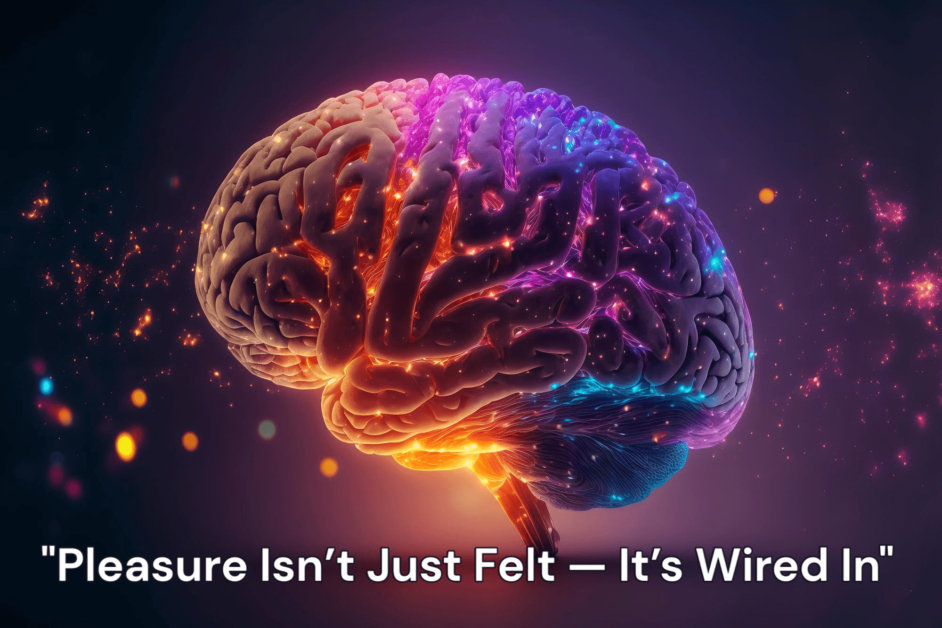Exploring the Neurological and Psychological Effects of BDSM
Introduction
BDSM—encompassing Bondage and Discipline, Dominance and Submission, Sadism and Masochism—is more than just a set of erotic practices; it’s a complex interplay of psychological and neurological processes. Recent research has begun to uncover how BDSM activities influence the brain, shedding light on phenomena like subspace and Dom high. This article delves into the science behind these experiences, exploring the roles of endorphins, dopamine, and other neurochemicals.Wikipedia
The Neurochemistry of BDSM
Endorphins: The Body’s Natural Painkillers
During intense BDSM activities, the body releases endorphins—neurochemicals that act as natural painkillers. These endorphins can produce feelings of euphoria and well-being, similar to the “runner’s high” experienced by athletes. This chemical response helps explain why some individuals find pleasure in pain within a consensual BDSM context. Medium Wikipedia
Dopamine: The Reward Molecule
Dopamine, often referred to as the brain’s reward molecule, plays a significant role in the pleasure derived from BDSM. The anticipation and experience of BDSM activities can trigger dopamine release, reinforcing the desire to engage in such practices.
Cortisol and Stress Response
Interestingly, studies have shown that submissive participants may experience an increase in cortisol levels—a hormone associated with stress—during BDSM scenes. However, this stress response is often followed by a sense of relief and relaxation, suggesting a complex interplay between stress and pleasure in BDSM experiences. PMC
Subspace: The Altered State of Consciousness
Subspace is a term used to describe the altered state of consciousness that some submissives experience during BDSM play. Characterized by feelings of euphoria, detachment, and a diminished sense of time, subspace is thought to result from the intense physical and emotional stimuli of BDSM activities. Feeld
This state is believed to be linked to the release of endorphins and other neurochemicals, creating a trance-like experience that can be both therapeutic and pleasurable.
Dom High: The Dominant’s Euphoria
While much attention is given to the submissive’s experience, dominants can also enter an altered state known as “Dom high.” This state is characterised by feelings of empowerment, heightened focus, and euphoria. The psychological satisfaction of control and the physical exertion involved in BDSM play contribute to this experience. ScienceDirect
Psychological Benefits and Considerations
Engaging in BDSM practices can offer psychological benefits beyond immediate pleasure. Participants often report increased trust, improved communication, and a deeper emotional connection with their partners. The structured nature of BDSM scenes, with clear roles and boundaries, can provide a safe space for exploring desires and emotions. Verywell Mind
However, it’s essential to approach BDSM with informed consent, clear communication, and an understanding of the potential psychological impacts. Aftercare—a period of support and care following a BDSM scene—is crucial for both dominants and submissives to process their experiences and maintain emotional well-being. ScienceDirect
Conclusion
The intersection of pain and pleasure in BDSM is underpinned by complex neurochemical and psychological processes. Understanding the science behind these experiences not only demystifies BDSM but also highlights its potential for personal growth, emotional connection, and therapeutic benefit. As research continues to evolve, it becomes increasingly clear that BDSM, when practiced consensually and responsibly, can be a healthy and enriching aspect of human sexuality.
For more insights into the world of BDSM and its psychological aspects, visit our Domin8trix Blog or explore our main site.
Sources




I really like reading through a post that can make men and women think. Also, thank you for allowing me to comment!
Thank you so much for your thoughtful feedback! I’m really glad to hear the post sparked reflection—it’s exactly what I hoped to achieve. The intersection of neuroscience and sexuality is a fascinating area that deserves more open, informed discussion, and I appreciate you taking the time to share your thoughts. If there are any specific topics you’d like to see explored in future articles, feel free to suggest them!
Thanks for sharing. I read many of your blog posts, cool, your blog is very good.
Thank you so much for your kind words and for taking the time to read our posts! 💫
We’re really glad you’re enjoying the content — The Science of Pain and Pleasure is one of our favourites too, as it helps bridge the gap between curiosity and understanding when it comes to the psychological and neurological sides of BDSM.
If you liked this one, you might also enjoy our other articles on Kinks Across Cultures
and The Psychology of Submission
— both explore the deeper layers of connection and desire within the BDSM world.
Thank you again for being part of our growing community 💋